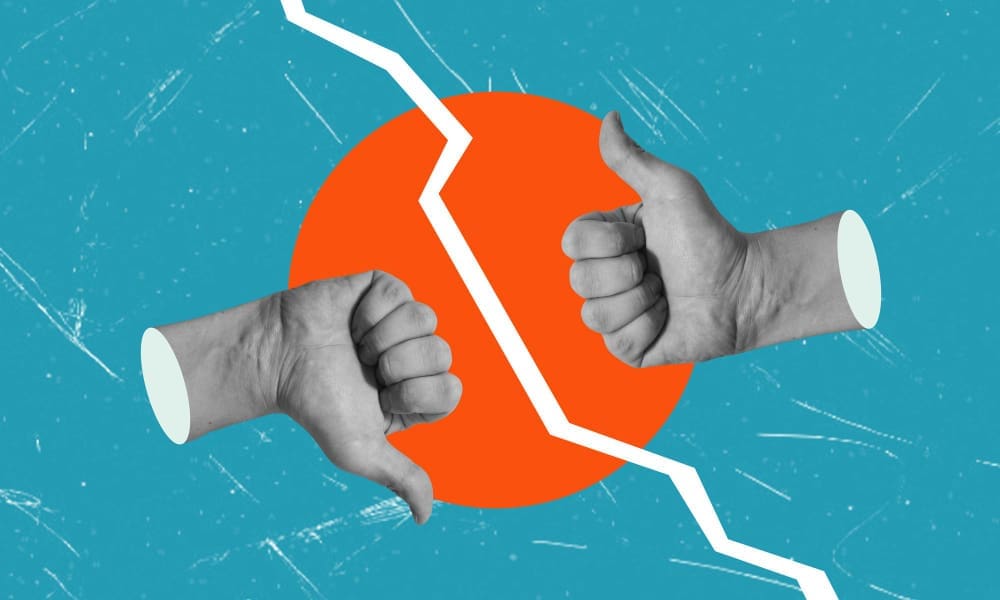KEY POINTS
- Philanthrocapitalism is a 21st-century approach to giving that applies market-driven business strategies, such as venture capital and corporate management, to solve social problems.
- Proponents argue this model brings efficiency and innovation to global challenges by making strategic bets and using data-backed metrics for a measurable “social return on investment.”
- Critics warn that this model concentrates immense power in the hands of an unelected elite and lacks democratic accountability.
- Key examples include the Bill & Melinda Gates Foundation, which focuses on global health, and the Chan Zuckerberg Initiative (CZI), which is structured as an LLC to allow for-profit investments and political lobbying.
- The debate over philanthrocapitalism raises questions about potential conflicts of interest, the risk of private agendas setting the global development agenda, and the possibility of undermining public institutions.
A new class of billionaire benefactors, from Bill Gates to Mark Zuckerberg, is reshaping the world of giving through a model known as “philanthrocapitalism.” This 21st-century approach applies aggressive, market-driven business strategies to solve society’s most pressing problems, aiming for scalable, data-backed results. While proponents argue this model brings unprecedented efficiency and innovation to global challenges like disease and poverty, a growing chorus of critics warns that it concentrates immense power in the hands of an unelected elite, lacks democratic accountability, and risks prioritizing market-friendly fixes over addressing the root causes of inequality.
What is Philanthrocapitalism?
At its core, philanthrocapitalism represents a fundamental shift from traditional charity. It moves beyond simple check-writing and embraces the tools and mindset of venture capital and corporate management. The goal is not just to alleviate symptoms but to generate a measurable, sustainable “social return on investment.”
This philosophy was popularized in the early 2000s, gaining traction as a new generation of tech billionaires sought to apply the same principles that built their empires to their philanthropic endeavors. The movement is defined by a distinct set of operating principles.

The Core Principles
Philanthrocapitalists view social problems as markets that can be optimized. They seek out “high-impact” opportunities and are willing to make big, strategic bets on innovative solutions. This often involves rigorous data collection and performance metrics to track progress and ensure that every dollar is maximized for effect.
Unlike traditional non-profits that often rely on widespread, smaller donations, this model is characterized by massive, top-down funding from a single donor or a small group. The focus is on scalability—finding a solution that can be replicated and expanded globally to affect millions of lives.
Key Players and Their Foundations
The most prominent example is the Bill & Melinda Gates Foundation. With an endowment in the tens of billions, it has become a dominant force in global health, pouring vast sums into vaccine development, disease eradication, and agricultural technology. Its success in helping slash child mortality rates is a testament to the model’s potential scale.
Another key entity is the Chan Zuckerberg Initiative (CZI), founded by Meta CEO Mark Zuckerberg and Dr. Priscilla Chan. Uniquely, CZI is structured as a limited liability company (LLC), not a traditional foundation. This allows it to invest in for-profit companies, make political donations, and lobby governments—blurring the lines between philanthropy, business, and political influence.
Other major players include Bloomberg Philanthropies, founded by Michael Bloomberg, which focuses on public health, climate change, and government innovation, and the Omidyar Network, started by eBay founder Pierre Omidyar, which uses a similar hybrid model of for-profit investments and non-profit grants.
The Case for Philanthrocapitalism: A New Era of Giving
Supporters of philanthrocapitalism argue that it injects a much-needed dose of discipline, innovation, and ambition into a sector that can sometimes be inefficient and slow-moving. They contend that the scale of modern problems requires the kind of bold, strategic thinking that defines successful businesses.

Efficiency and Scale
By applying business metrics, philanthrocapitalists can direct funds to where they will have the most significant impact. Gavi, the Vaccine Alliance, is a frequently cited success story. With substantial backing from the Gates Foundation, Gavi created a market for vaccines in developing countries, immunizing hundreds of millions of children and dramatically reducing diseases like measles and polio.
This achievement, supporters say, would have been difficult to orchestrate through fragmented government aid or smaller charitable efforts. The ability to mobilize massive resources quickly allows these foundations to tackle enormous challenges that might overwhelm public institutions.
Innovation and Risk-Taking
Private philanthropists can fund high-risk, high-reward projects that publicly funded bodies, accountable to taxpayers, might shy away from. They can afford to experiment with unproven technologies or controversial approaches in search of a breakthrough.

This includes funding for genetically modified crops designed to withstand drought and disease, novel educational software, or radical new approaches to clean energy. In this view, philanthrocapitalists act as society’s research and development arm, absorbing the risk of failure in the pursuit of transformative success.
The Mounting Criticism: Power, Accountability, and Unintended Consequences
Despite its successes, philanthrocapitalism faces intense scrutiny. Critics argue that while the intentions may be noble, the model concentrates agenda-setting power in the hands of a few wealthy individuals, bypasses democratic processes, and can inadvertently perpetuate the very systems it aims to fix.
The Democratic Deficit
The central critique revolves around accountability. A simple question encapsulates this concern: Who elected Bill Gates? The Gates Foundation has more influence on global health policy in some developing nations than their own health ministries. Its decisions, which affect the well-being of millions, are made in private by a small board of trustees with no public oversight.
This stands in stark contrast to governments, which are, at least in theory, accountable to their citizens through elections. When a private foundation’s strategy fails or has negative consequences, there is no formal mechanism for the public to demand a change in course. This creates what many call a “democratic deficit,” where immense public power is wielded privately.
The Problem of Agenda Setting
The personal interests and worldview of a handful of billionaires inevitably shape the global development agenda. The Gates Foundation’s heavy focus on technological solutions like vaccines and genetically modified seeds, for instance, has been criticized for diverting attention and resources away from strengthening public healthcare systems and addressing the social determinants of health, such as poverty, sanitation, and education.
This creates a risk of philanthropic monoculture, where a single, dominant theory of change crowds out alternative approaches. Local, community-based solutions that may be more effective in a specific context can be overlooked in favor of a top-down, one-size-fits-all solution favored by the donor.
Conflicts of Interest and Self-Serving Motives
Critics also point to potential conflicts of interest. The same systems that generate extreme wealth for philanthrocapitalists are often the sources of the social problems they seek to solve. The model rarely challenges the status quo of low taxes on the wealthy, deregulation, and labor practices that contribute to inequality.

Furthermore, mega-donations come with significant tax benefits. When a billionaire donates billions to their own foundation, they receive a massive tax deduction. This means taxpayers are effectively subsidizing the philanthropic priorities of the ultra-rich, who retain full control over how that money is spent, rather than it flowing into the public treasury to be allocated democratically.
Undermining Public Institutions
When private foundations step in to fund core public services like education or disease control, it can allow governments to abdicate their responsibilities. This can lead to a gradual privatization of the public sphere, where citizens become dependent on the whims of a benefactor rather than the duties of their state.
The line becomes even blurrier with entities like CZI. By operating as an LLC, it can seamlessly switch between making a grant, investing in a startup, and lobbying for legislation that benefits its portfolio. This fusion of charity, corporate interest, and political power is seen by many as a dangerous consolidation of influence.
Navigating the Future: Can Philanthropy Be Reformed?
The debate over philanthrocapitalism is not about whether the wealthy should be generous, but about how that generosity is structured and what its impact is on democratic society. This has sparked a broader conversation about reforming the sector to make it more accountable and equitable.

Calls for Greater Transparency and Accountability
Reform proposals include calls for greater transparency in foundation decision-making and stricter regulations to prevent self-dealing. Some advocate for mandates that require large foundations to have community representatives on their boards, ensuring that the voices of those being served are heard.
The rise of “trust-based philanthropy” offers an alternative, emphasizing smaller, unrestricted grants to organizations and trusting local leaders to know what their communities need best. This approach seeks to shift power from the donor to the recipient.
Addressing the Root Causes
A more radical critique, articulated by thinkers like author Anand Giridharadas, argues that philanthrocapitalism acts as a smokescreen. It allows the “winners” of an unequal global economy to burnish their reputations by “giving back,” while fighting to preserve the very systems—such as tax loopholes and weak regulation—that enabled their wealth accumulation.
From this perspective, true progress requires not just more strategic charity, but systemic economic and political reforms. This includes more progressive taxation and stronger public institutions, which would reduce the need for private mega-philanthropy in the first place.
Ultimately, philanthrocapitalism exists in a paradox. It harnesses the immense power of private wealth to produce tangible good on a global scale, yet it simultaneously raises profound questions about power, democracy, and justice in the 21st century. The challenge for society is to navigate this complex terrain—to leverage the benefits of strategic giving while safeguarding the public institutions and democratic principles that form the bedrock of a fair and equitable world.








